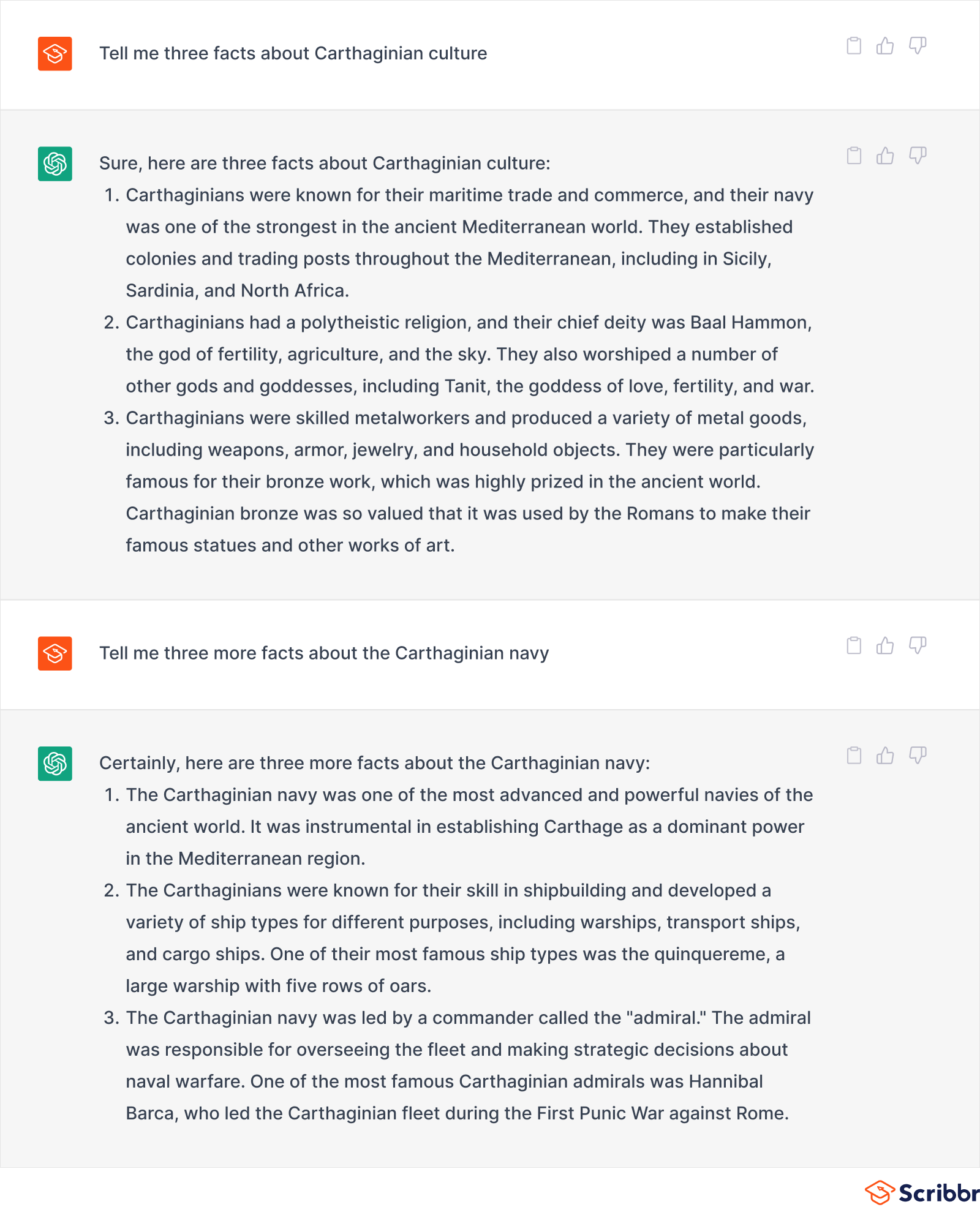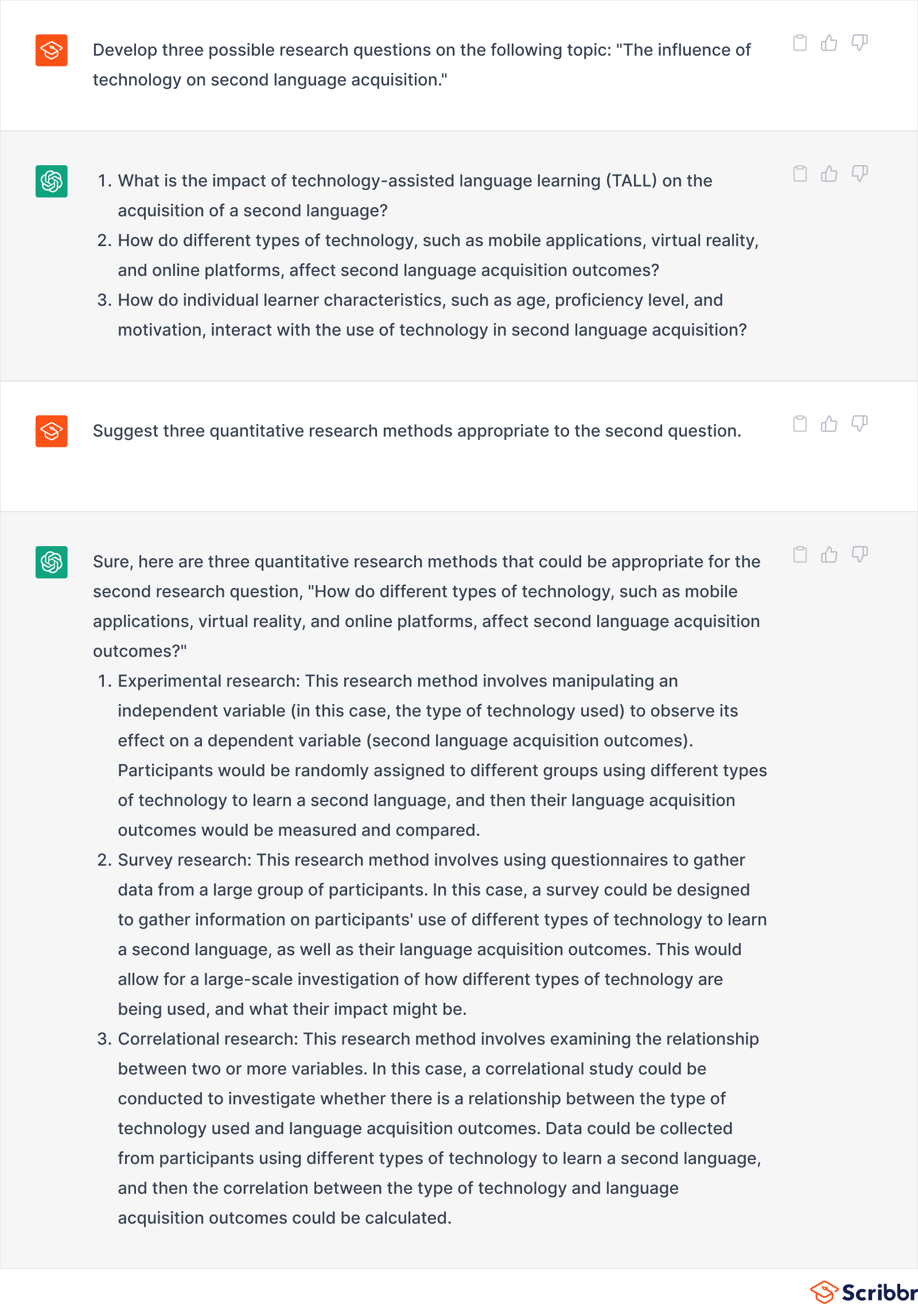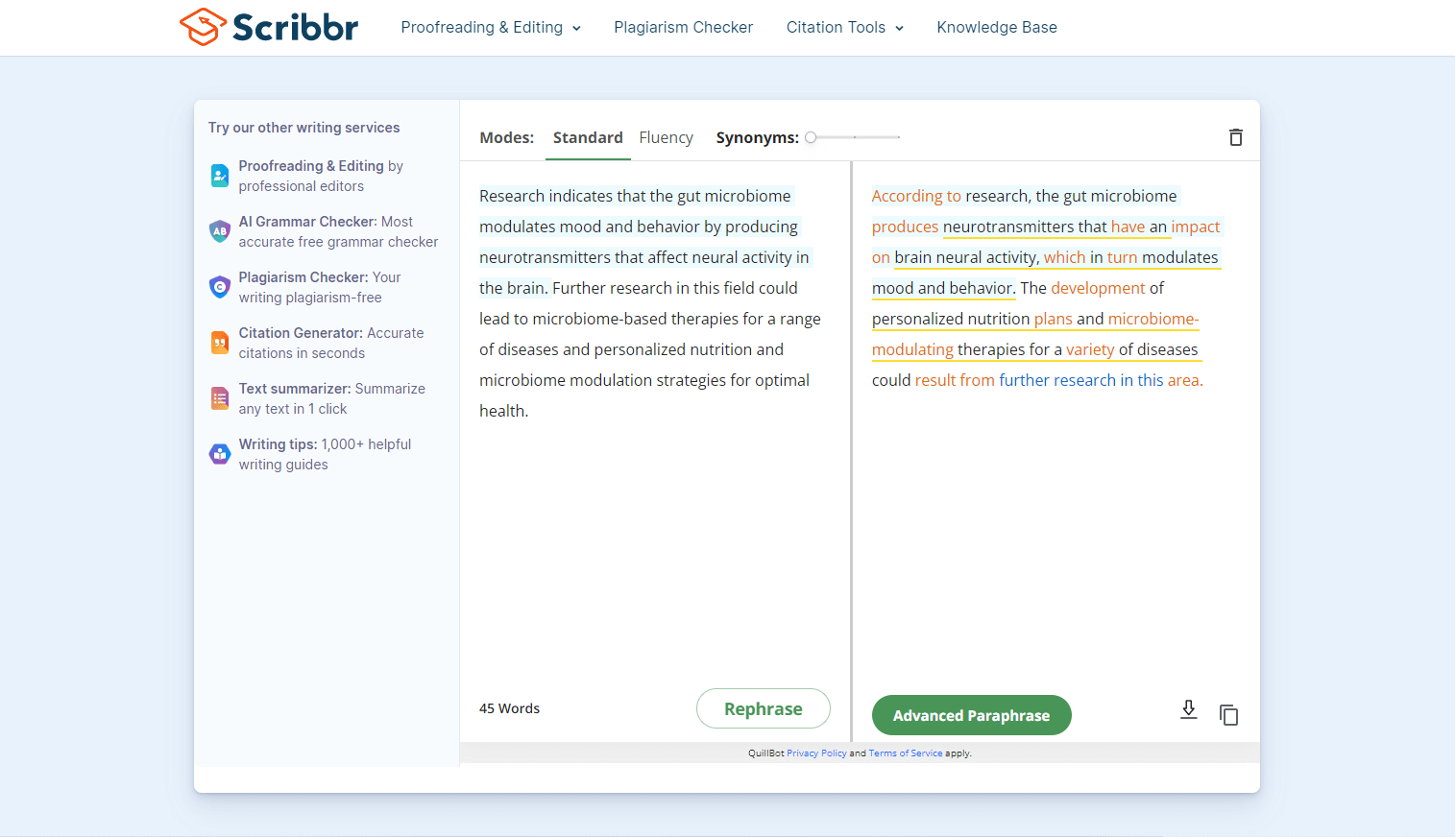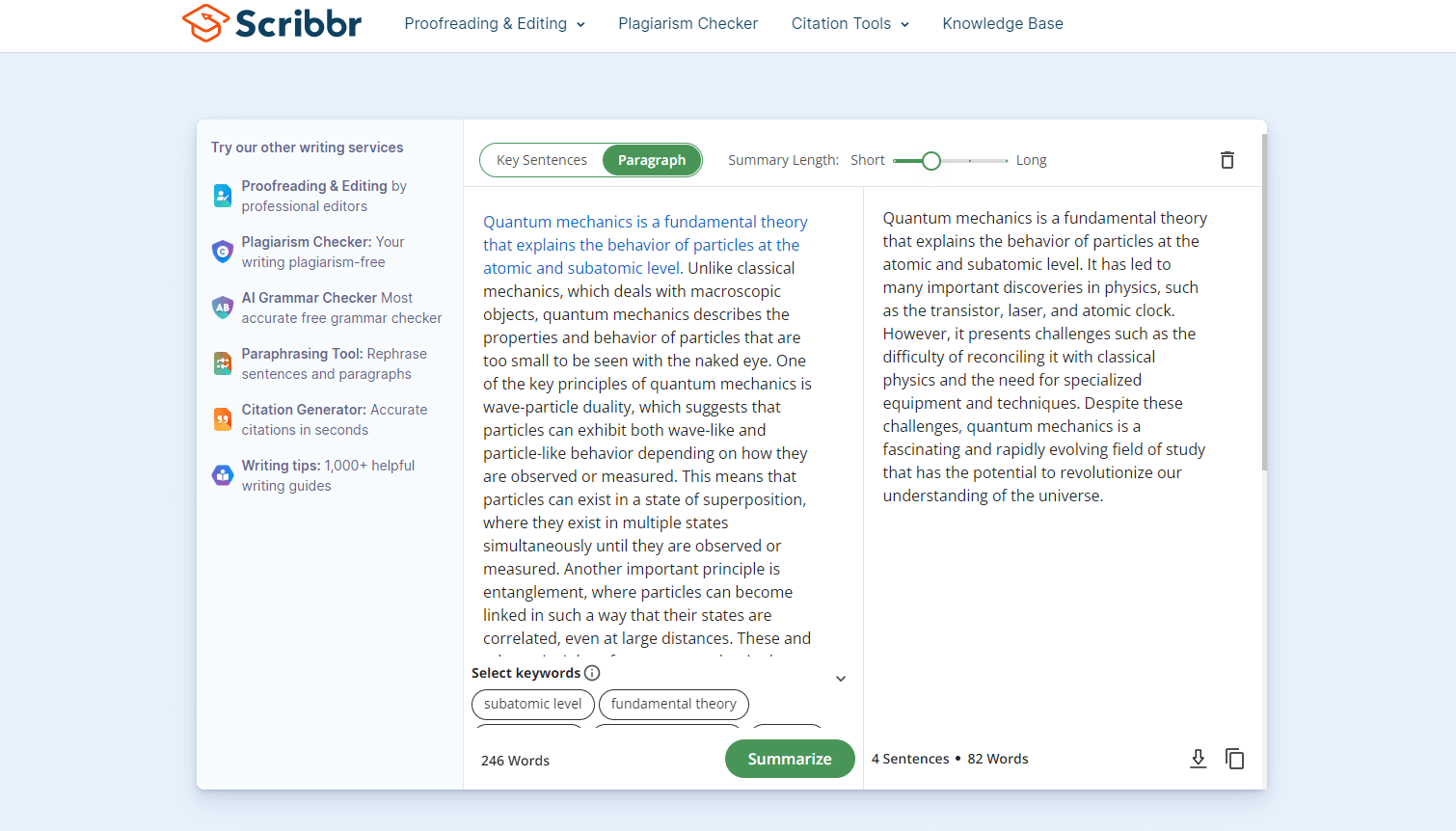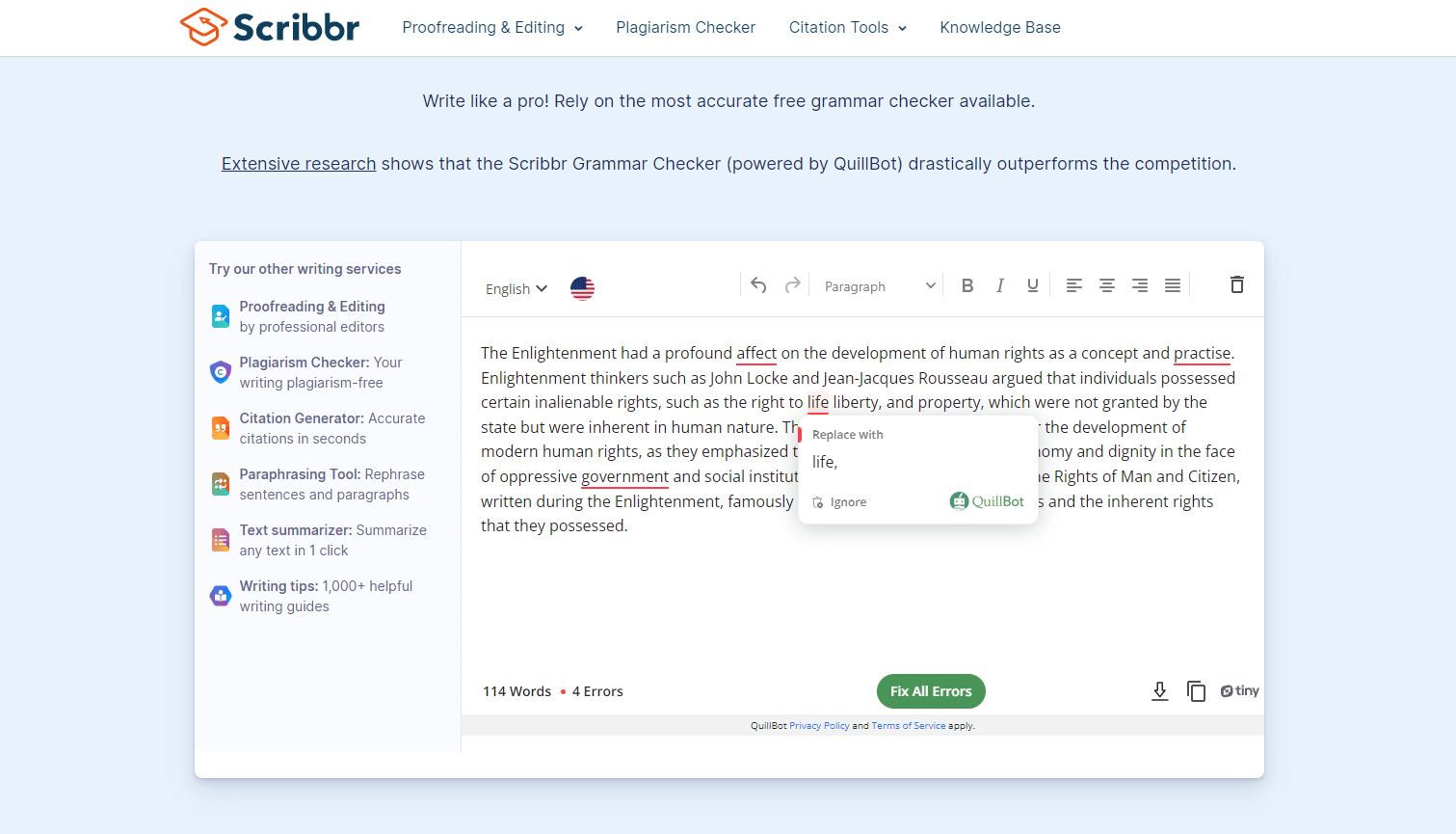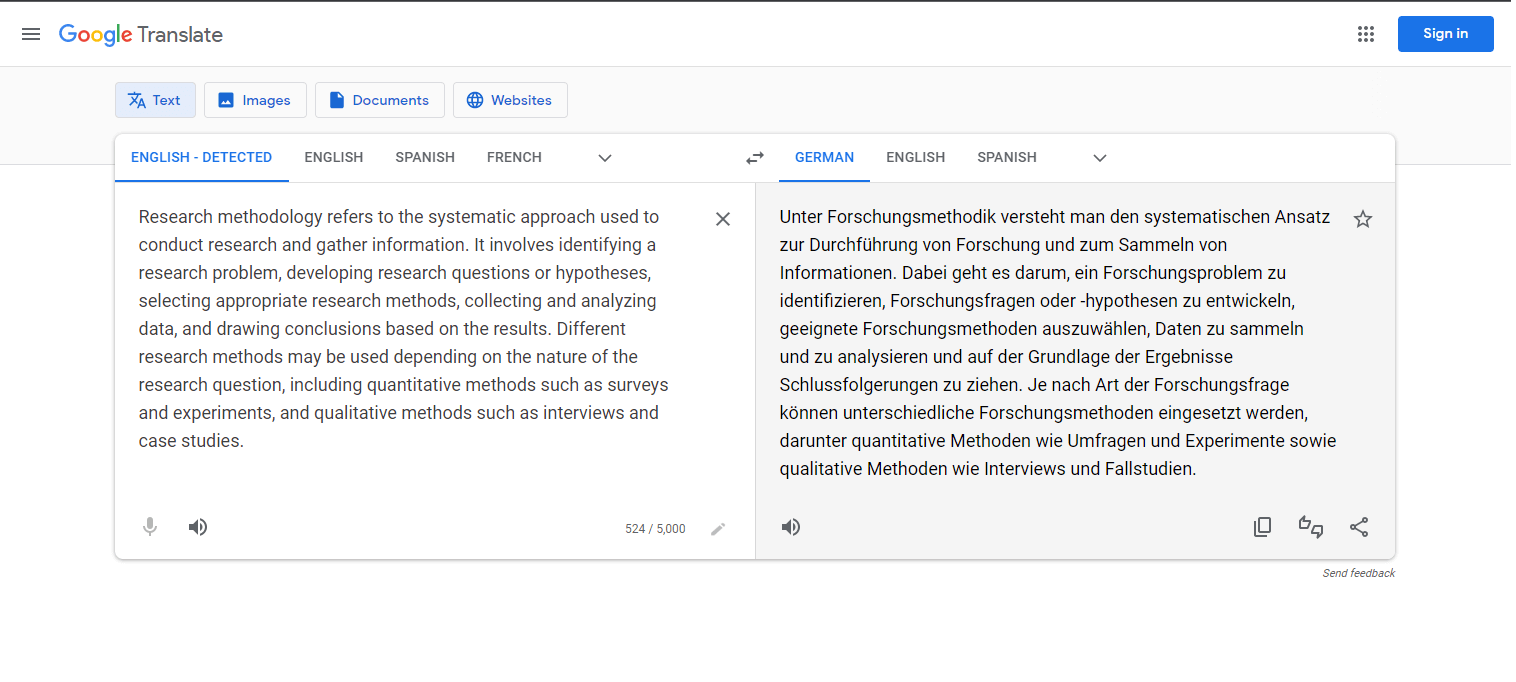AI Writing Tools | Definition, Uses & Implications
AI writing tools are artificial intelligence (AI) software applications like ChatGPT that help to automate or assist the writing process. These tools use machine learning algorithms to generate human-sounding text in response to users’ text-based prompts.
Other AI tools, such as grammar checkers and paraphrasers, serve more specific functions, like identifying grammar and spelling mistakes or rephrasing text.
How do AI writing tools work?
AI writing tools (chatbots, grammar checkers, etc.) use natural language processing (NLP) algorithms, machine learning, and large language models (LLMs) to generate or improve written text. These tools are trained to identify patterns in vast amounts of data. The tools then use these patterns to analyse human inputs (or prompts) and generate natural-sounding outputs (similar to how predictive text works).
Different AI tools may be programmed in different ways. For example, ChatGPT, the popular chatbot developed by OpenAI and released in November 2022, uses generative pre-trained transformers (GPTs) and was trained using reinforcement learning from human feedback (RLHF), meaning that the tool was given feedback from humans to help guide it towards the most helpful responses.
What can AI writing tools be used for?
AI writing tools have a number of helpful applications. Some of these applications are discussed below.
Interactive learning and feedback
Generative AI tools can be helpful resources for conversational learning. By inputting questions, users can engage in interactive learning at any time.
You can also prompt these tools to provide feedback on your work to improve the clarity or consistency of your writing. However, it’s important not to upload sensitive information, as user inputs are generally saved by the tool for the purposes of training future models.
Below is an example of how ChatGPT can be used for interactive learning.
Generating research questions and outlines
AI writing tools can be used to generate potential research questions or research paper outlines. You can then refine the tool’s responses by further prompting it or directly editing the output yourself to ensure the result makes sense and fits your requirements.
Below is an example of how ChatGPT can be used to generate potential reseach questions and research method ideas.
Paraphrasing text
AI tools like ChatGPT and Scribbr’s free paraphrasing tool can help you paraphrase text to express your ideas more clearly, avoid repetition, and maintain a consistent tone throughout your writing.
They can also help you incorporate scholarly sources in your writing in a more concise and fluent way, without the need for direct quotations. However, it’s important to correctly cite all sources to avoid accidental plagiarism.
Summarising text
AI writing tools can help condense a text to its most important and relevant ideas. This can help you understand complex information more easily. You can also use summariser tools on your own work to summarise your central argument, clarify your research question, and form conclusions.
You can do this using generative AI tools or more specialised tools like Scribbr’s free text-summariser.
Proofreading text
AI writing tools can be used to identify spelling, grammar, and punctuation mistakes and suggest corrections. These tools can help to improve the clarity of your writing and avoid common errors.
While AI tools like ChatGPT offer useful suggestions, they can also potentially miss some mistakes or even introduce new grammatical errors into your writing.
We advise using Scribbr’s proofreading and editing service or a tool like Scribbr’s free grammar checker, which is designed specifically for this purpose.
Translating text
AI translation tools like Google Translate can be used to translate text from a source language into various target languages. While the quality of these tools tend to vary depending on the languages used, they’re constantly developing and are increasingly accurate.
Implications of AI writing tools
While there are many benefits to using AI writing tools, some commentators have emphasised the limitations of AI tools and the potential disadvantages of using them. These drawbacks are discussed below.
Impact on learning
One of the potential pitfalls of using AI writing tools is the effect they might have on a student’s learning and skill set. Using AI tools to generate a paper, thesis, or dissertation, for example, may impact a student’s research, critical thinking, and writing skills.
However, other commentators argue that AI tools can be used to promote critical thinking (e.g., by having a student evaluate a tool’s output and refine it).
Consistency and accuracy
Generative AI tools (such as ChatGPT) are not always reliable and sometimes produce results that are inaccurate or factually incorrect. Although these tools are programmed to answer questions, they can’t judge the accuracy of the information they provide and may generate incorrect answers or contradict themselves.
It’s important to verify AI-generated information against a credible source.
Grammatical mistakes
While generative AI tools can produce written text, they don’t actually understand what they’re saying and sometimes produce grammar, spelling, and punctuation mistakes.
You can combine the use of generative AI tools with Scribbr’s grammar checker, which is designed to catch these mistakes.
Ethics and plagiarism
As AI writing tools are trained on large sets of data, they may produce content that is similar to existing content (which they usually cannot cite correctly), which can be considered plagiarism. Furthermore, passing off AI-generated text as your own work is usually considered a form of plagiarism and is likely to be prohibited by your university.
We strongly advise against students using AI tools as a substitute for coursework. Rather, we recommend students use these tools responsibly in the ways outlined above to complement their academic writing and research skills.
Other interesting articles
If you want more tips on using AI tools, understanding plagiarism, and citing sources, make sure to check out some of our other articles with explanations, examples, and formats.
Using AI tools
Plagiarism
Frequently asked questions about AI writing tools
- How can I use AI writing tools?
-
AI writing tools can be used to perform a variety of tasks.
Generative AI writing tools (like ChatGPT) generate text based on human inputs and can be used for interactive learning, to provide feedback, or to generate research questions or outlines.
These tools can also be used to paraphrase or summarise text or to identify grammar and punctuation mistakes. You can also use Scribbr’s free paraphrasing tool, summarising tool, and grammar checker, which are designed specifically for these purposes.
- Can I use AI tools to write my essay?
-
Using AI writing tools (like ChatGPT) to write your essay is usually considered plagiarism and may result in penalisation, unless it is allowed by your university. Text generated by AI tools is based on existing texts and therefore cannot provide unique insights. Furthermore, these outputs sometimes contain factual inaccuracies or grammar mistakes.
However, AI writing tools can be used effectively as a source of feedback and inspiration for your writing (e.g., to generate research questions). Other AI tools, like grammar checkers, can help identify and eliminate grammar and punctuation mistakes to enhance your writing.
- Is ChatGPT a credible source?
-
No, ChatGPT is not a credible source of factual information and can’t be cited for this purpose in academic writing. While it tries to provide accurate answers, it often gets things wrong because its responses are based on patterns, not facts and data.
Specifically, the CRAAP test for evaluating sources includes five criteria: currency, relevance, authority, accuracy, and purpose. ChatGPT fails to meet at least three of them:
- Currency: The dataset that ChatGPT was trained on only extends to 2021, making it slightly outdated.
- Authority: It’s just a language model and is not considered a trustworthy source of factual information.
- Accuracy: It bases its responses on patterns rather than evidence and is unable to cite its sources.
So you shouldn’t cite ChatGPT as a trustworthy source for a factual claim. You might still cite ChatGPT for other reasons – for example, if you’re writing a paper about AI language models, ChatGPT responses are a relevant primary source.
- How does ChatGPT work?
-
ChatGPT is a chatbot based on a large language model (LLM). These models are trained on huge datasets consisting of hundreds of billions of words of text, based on which the model learns to effectively predict natural responses to the prompts you enter.
ChatGPT was also refined through a process called reinforcement learning from human feedback (RLHF), which involves “rewarding” the model for providing useful answers and discouraging inappropriate answers – encouraging it to make fewer mistakes.
Essentially, ChatGPT’s answers are based on predicting the most likely responses to your inputs based on its training data, with a reward system on top of this to incentivise it to give you the most helpful answers possible. It’s a bit like an incredibly advanced version of predictive text. This is also one of ChatGPT’s limitations: because its answers are based on probabilities, they’re not always trustworthy.
- How do I access ChatGPT?
-
You can access ChatGPT by signing up for a free account:
- Follow this link to the ChatGPT website.
- Click on “Sign up” and fill in the necessary details (or use your Google account). It’s free to sign up and use the tool.
- Type a prompt into the chat box to get started!
A ChatGPT app is also available for iOS, and an Android app is planned for the future. The app works similarly to the website, and you log in with the same account for both.
